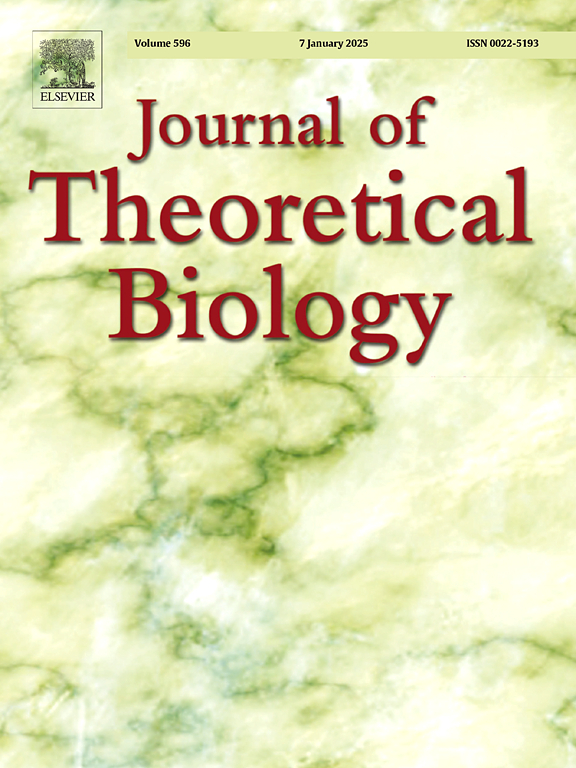理论生物学的支柱:“发育过程中细胞相互作用的数学模型,I和II”
IF 2
4区 数学
Q2 BIOLOGY
引用次数: 0
摘要
本文回顾了Aristid Lindenmayer发表在1968年《理论生物学杂志》第18期第280-299页和300-315页上的突破性论文《细胞相互作用的数学模型》的主要思想和影响。本文介绍了l系统的思想,它是目前植物发展建模的主要形式。本文章由计算机程序翻译,如有差异,请以英文原文为准。
Pillars of theoretical biology: ‘Mathematical models for cellular interaction in development, I and II’
This paper reviews the main idea and impact of the groundbreaking paper by Aristid Lindenmayer, ‘Mathematical models for cellular interaction in development, Parts I and II’, published in the Journal of Theoretical Biology 18, 1968, pp. 280–299 and 300–315. The paper introduced the idea of L-systems, now the leading formalism for modeling plant development.
求助全文
通过发布文献求助,成功后即可免费获取论文全文。
去求助
来源期刊
CiteScore
4.20
自引率
5.00%
发文量
218
审稿时长
51 days
期刊介绍:
The Journal of Theoretical Biology is the leading forum for theoretical perspectives that give insight into biological processes. It covers a very wide range of topics and is of interest to biologists in many areas of research, including:
• Brain and Neuroscience
• Cancer Growth and Treatment
• Cell Biology
• Developmental Biology
• Ecology
• Evolution
• Immunology,
• Infectious and non-infectious Diseases,
• Mathematical, Computational, Biophysical and Statistical Modeling
• Microbiology, Molecular Biology, and Biochemistry
• Networks and Complex Systems
• Physiology
• Pharmacodynamics
• Animal Behavior and Game Theory
Acceptable papers are those that bear significant importance on the biology per se being presented, and not on the mathematical analysis. Papers that include some data or experimental material bearing on theory will be considered, including those that contain comparative study, statistical data analysis, mathematical proof, computer simulations, experiments, field observations, or even philosophical arguments, which are all methods to support or reject theoretical ideas. However, there should be a concerted effort to make papers intelligible to biologists in the chosen field.

 求助内容:
求助内容: 应助结果提醒方式:
应助结果提醒方式:


